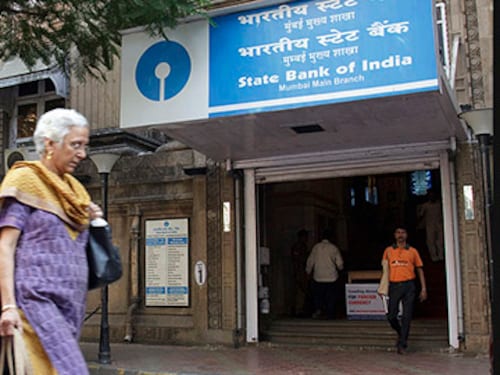SBI FY17 Q1 net profit down by 32%, provisions rise
Stock gains on lower-than-expected rise in bad loans


The State Bank of India (SBI), the country’s largest lender by assets, reported a 32 percent decline in its standalone net profit for the three months ended June 30, 2016, hit by higher provisioning made for bad loans.
SBI’s net profit fell to Rs 2,521 crore for the April to June period, from Rs 3,692 crore in the same duration of the previous year.
The bank’s shares, however, rose by 7.16 percent to close at Rs 243.2 at the Bombay Stock Exchange (BSE), as the rise in bad loans was lower-than-expected, compared to the January to March 2016 quarter.
SBI revealed that provisioning for bad loans rose to Rs 6,340 crore in the fiscal first quarter of FY17, compared with Rs 3,359 crore in the year-ago period.
On a standalone basis, SBI’s net interest income—the difference between interest earned and interest expended—rose marginally to Rs 14,312 crore from Rs 13,732 crore for the corresponding period a year earlier, the bank said.
As of June 2016, SBI’s gross non-performing assets (NPAs) rose by 3.4 percent over the previous quarter to Rs 10,15,412 crore from Rs 9,81,728 crore, in the March-ended quarter. Net NPAs edged up to 5,74,210 crore against Rs 5,58,070 crore in the March-ended quarter this year.
The gross NPA ratio as a percentage of total loans rose to 6.9 percent in the June quarter from 6.5 percent a quarter earlier while the net NPA ratio rose to 4.1 percent from 3.8 percent earlier.
Several public sector banks have been struggling to cope with rising bad loans and higher provisions to cover for a risk of defaults.
The Reserve Bank of India has directed banks to clean up their balance sheets by March 2017. It has introduced several regulations and powers to boost governance at the boards of banks. Massive recapitalisation of state-owned banks from the government is awaited, which will help them to start lending more as economic growth picks up.
First Published: Aug 12, 2016, 16:41
Subscribe Now